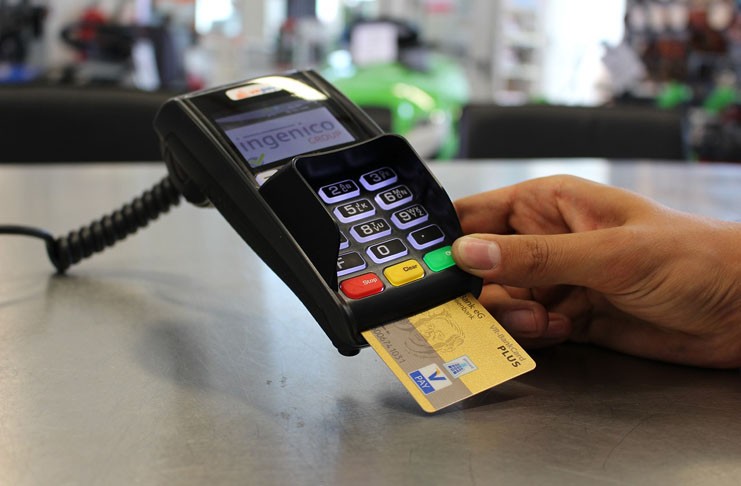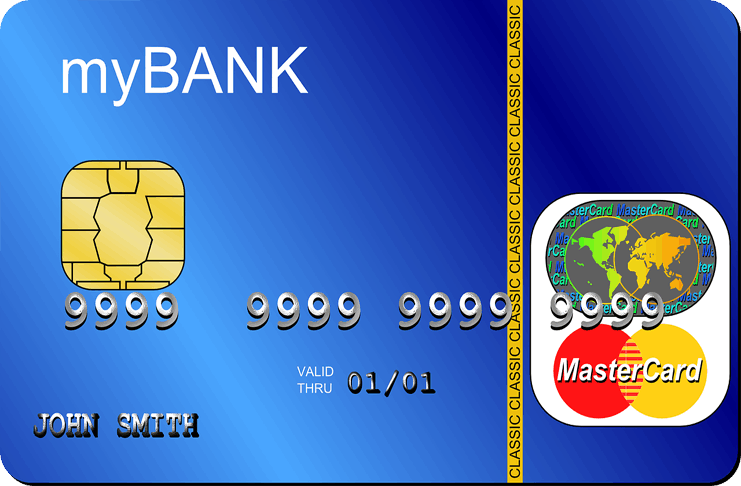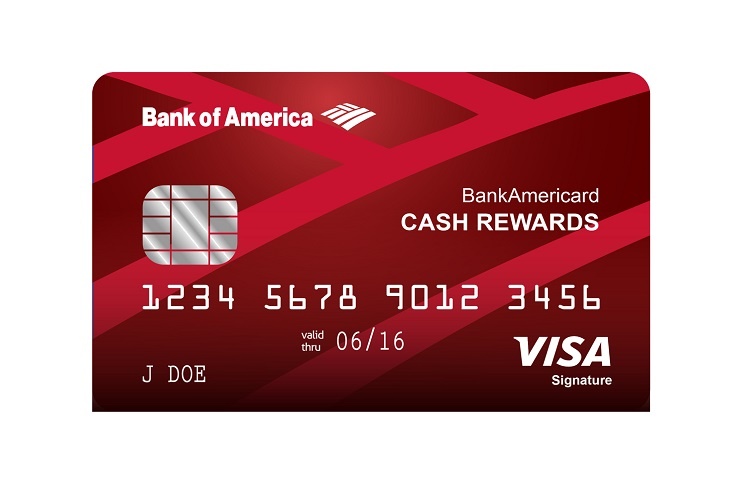Entering the world of financial management, a “US Bank Loan” can be a significant part of your financial journey. Whether it’s for a car, a home, or a business venture, knowing how to apply for a US Bank Loan can be a game-changer.
This is not a complex process if you have the right guidance, and this article aims to be just that for you. We will delve into the application method step by step, helping you navigate the complexities and emerge successfully on the other side.
Let’s unlock the potential of financial tools together, shall we?
Understanding the Basic Concepts of US Bank Loans
Embarking on the journey of understanding US Bank Loans requires a solid grasp of its basic concepts.
These financial tools, much like a double-edged sword, can be both powerful and overwhelming, depending on one’s understanding of their fundamentals.
This section aims to demystify the technical jargon, clarifying the definition of a US Bank Loan and the types of loans available. By the end of this discourse, these concepts will become second nature to you.
Analyzing the US Bank Loan: A Closer Look
A US Bank loan, in essence, is a sum of money lent by US Bank to a borrower with the expectation of repayment. This money must be repaid within a predetermined period, usually with interest.
This financial agreement is legally binding and provides the borrower with the necessary capital to fund personal or business projects.
The Interest Factor in US Bank Loans
Interest is an integral part of a US Bank Loan. It is the cost you pay for borrowing money and is usually presented as a percentage of the borrowed amount, known as the principal.
The interest rate can be fixed, meaning it remains the same throughout the loan term, or variable, which implies it can fluctuate based on market conditions.
The Legal Nature of a US Bank Loan
The third and final component of a US Bank loan is its legal nature. When you sign a loan agreement, you are entering into a legal contract with the bank.
This contract outlines the terms of the loan, including the payment schedule, interest rates, and penalties for late payments or defaults.
Diverse Paths to Financial Empowerment: Types of Bank Loans in the United States
The US Bank offers a variety of loan options, each tailored to meet different financial needs and goals. The range is wide, catering to various personal or business aspirations. To make an informed decision, it is essential to familiarize yourself with the different possibilities:
- Personal Loans: Unsecured loans suitable for financing significant purchases or consolidating high-interest debts.
- Home Equity Loans: Loans that use the equity in your home as collateral, typically for home improvement projects or debt consolidation.
- Auto Loans: Loans designed specifically to help you purchase a new or used car.
- Business Loans: Loans designed to provide businesses with the capital needed to fund their growth or manage cash flow.
- Student Loans: These loans are designed to help cover the cost of higher education.
- Mortgages: Loans used for the purchase of real estate.
By understanding the breadth of loan types available, you empower yourself to choose the most suitable path to meet your financial needs and aspirations.
The Importance of Financial Education When Applying for a Loan
Applying for a bank loan in the United States is not just about filling out forms and waiting for approval. It’s about understanding the financial landscape and mastering the nuances that influence the loan process.
From credit scores to financial planning and understanding interest rates, financial education is key. It’s about making informed decisions that align with your financial goals.
Understanding the Abstract: Your Credit Score
Your credit score is like a financial report, providing lenders with an overview of your creditworthiness. It is a three-digit number calculated based on your credit history, including factors such as payment history, debt-to-income ratio, and credit utilization rate.
This score serves as the first impression for lenders, so the higher the score, the better.
Revealing Credit Score Components
Although the credit score may seem like a single number, it is the end result of several contributing factors. Payment history carries the most weight, followed by the amount you owe, the length of your credit history, the types of credit used, and new credit applications.
Each factor carries a different weight, collectively forming the final score.
Credit Score: Your Financial Reputation
A strong credit score is your ticket to competitive loan terms. It shows a history of responsible credit management, which is favorable to lenders. However, a low credit score is not a death sentence.
It is an opportunity to implement credit repair strategies and demonstrate your creditworthiness to potential lenders.
The Roadmap to Success: Financial Planning
The role of financial planning in the loan application process cannot be overstated. It is the process of establishing, planning, achieving, and reviewing your life goals through proper management of your finances. Here are some critical aspects:
- Debt Management: Effective debt management ensures that your debts do not spiral out of control, maintaining a favorable debt-to-income ratio.
- Saving and Investing: Regular saving and smart investing contribute to financial security, reducing your reliance on loans.
- Budgeting: A realistic budget keeps your expenses in check, ensuring you have enough funds to repay your loan.
Understanding Interest Rates: The Legal Text
Interest rates play a crucial role in determining the amount of your loan. Essentially, they are the cost of borrowing money, usually expressed as a percentage of the loan amount.
The rate can be fixed, staying the same throughout the loan term, or variable, changing in response to market conditions.
Impact of Interest Rates on Loan Payment
Interest rates directly impact your monthly loan payments. Higher rates mean higher loan costs and, consequently, higher monthly payments.
Understanding how these rates work will enable you to estimate potential loan costs, thus avoiding unpleasant surprises in the future.
Step-by-Step Guide to Applying for a Loan at US Bank
In this crucial part of our guide, we will delve into the details of the loan application process at US Bank. We will walk you through it meticulously, breaking down each step so you understand what to expect.
So get ready for an enlightening journey as we equip you with the right tools to navigate the loan application process at US Bank.
Considerations Before Applying: Strategic Forecast
Prior to embarking on the application process, it is necessary to consider various aspects. It is not just a formality but a strategic process that could determine the success of your application. Let’s examine the key points you should keep in mind:
- Analyze your financial health: Evaluate your current financial situation, including your income, expenses, credit score, and existing debts.
- Determine the purpose of the loan: Have a clear and specific purpose for the loan, which can better guide your choice of loan type and amount.
- Select the appropriate type of loan: Based on your needs and financial situation, choose the type of loan that best suits you, whether it’s a personal, mortgage, car loan, or other types.
- Evaluate your loan repayment capacity: Use online loan calculators to estimate your monthly payments, making sure they can comfortably fit into your budget.
The Application Process: Mapping the Path
The application journey starts with a visit to the official US Bank website or a trip to the nearest branch. Here, you will kick off the process by filling in the required information. It is crucial to provide precise and up-to-date details to ensure a smooth process.
This includes your personal information, financial details, and specifications regarding the loan you are applying for.
Navigating the Maze: Documentation and Verification
Once the initial phase has been completed, you will move on to the verification stage. Here, you will be asked to present various documents as proof of your financial situation and credibility.
This could include pay stubs, bank statements, tax returns, and identification documents. Each document plays a crucial role in the decision-making process, so ensuring their validity and authenticity is essential.
Emerging from the Shadows: Approval and Disbursement
The final stage involves waiting for loan approval. This period varies depending on the complexity of your financial situation and the type of loan. Once approved, the loan amount will be disbursed, marking the successful completion of your application process.
It is important to remember that loan approval is subject to your financial credibility and the bank’s assessment of your repayment ability.
Diving Deeper: The Wells Fargo Autograph Credit Card
In our quest for financial wisdom, we come across various avenues to explore. The Wells Fargo Autograph Credit Card is one of those options. Often overshadowed by broader financial products, this credit card boasts features that deserve our attention.
Let’s delve into how it works, the application process, and how it compares to the US Bank Loan.
Wells Fargo Autograph Credit Card: A Comprehensive Overview
The Wells Fargo Autograph Credit Card is a well-designed financial tool to meet your credit needs.
Its features, ranging from competitive interest rates to valuable rewards programs, make it a preferred choice among a wide variety of credit cards. By understanding how it works, you can assess if it aligns with your financial goals.
Valuing the Features
Wells Fargo has ensured that the Autograph Credit Card stands out with a range of beneficial features. For instance, the rewards program offers points for every dollar spent, which can be redeemed for various benefits.
Furthermore, its fraud protection feature provides cardholders with an increased sense of security.
Interest Rates and More
The Autograph Credit Card is not just about rewards and security. Its competitive interest rates and flexible credit limits make it an attractive option for those seeking credit flexibility.
The introductory APR offer is particularly appealing, easing the financial burden for new cardholders.
A Step-by-Step Guide: Applying for the Wells Fargo Autograph Credit Card
When diving into the application process, it’s crucial to note that it is simple and user-friendly. Wells Fargo has ensured that all potential cardholders can navigate the application smoothly. Here’s how you can apply for the Wells Fargo Autograph Credit Card:
- Visit the official Wells Fargo website.
- Navigate to the ‘Credit Cards’ section.
- Select the ‘Autograph Credit Card’ option.
- Click on ‘Apply Now’.
- Fill out the application form with the necessary details.
- Review your application to ensure all information is accurate.
- Submit your application and await Wells Fargo’s response.
US Bank Loan vs. Wells Fargo Autograph Credit Card: A Comparative Analysis
As we delve into the comparison, it becomes clear that both financial products serve different purposes but come with inherent similarities. US Bank loans are more suitable for larger expenses, providing access to larger sums of money that can be repaid over a specified period.
On the other hand, the Wells Fargo Autograph Credit Card offers a revolving credit line that can be used based on the cardholder’s needs. The choice between the two depends on the individual’s financial needs and circumstances.
While a US Bank loan can finance significant life events or projects, the Wells Fargo Autograph Credit Card offers flexibility and rewards for everyday expenses. Both have the potential to enhance your financial independence, which is unleashed based on how effectively they are utilized.
Understanding Interest Rates and Their Impact on Loan Payments
In our quest to understand US Bank loans, we cannot overlook the importance of interest rates. These rates represent the price you pay for the privilege of borrowing and reflect the cost of your loan over time.
This section will delve into how interest rates work, their effect on loan payments, and how variable rates can significantly impact the total cost of your loan.
Interest Rate Framework
To fully understand the role of interest rates, we must first grasp how they function. Interest rates are typically expressed as a percentage of the loan amount, charged over a specified period, usually one year, and are referred to as the Annual Percentage Rate (APR).
Interest Rates: The Lender’s Perspective
From the lender’s perspective, the interest rate serves as compensation for the risk taken when granting the loan. Essentially, the higher the risk, the higher the interest rate.
For instance, a person with a lower credit score is perceived as a higher risk for the lender, and therefore, higher interest rates are applied.
Interest Rates and Your Wallet
From the borrower’s perspective, the interest rate reflects the cost of borrowing. For instance, a $10,000 loan with a 5% interest rate will generate $500 in interest during the first year. This interest is in addition to repaying the principal loan amount.
The Ripple Effect of Interest Rates on Your Loan
Understanding how fluctuating interest rates can affect your loan is crucial for financial planning. They not only determine the total cost of your loan but can also impact your monthly payments and, subsequently, your budget.
- Fixed Rates: A loan with a fixed interest rate means the rate remains constant throughout the loan term. This option provides predictability, as your monthly payments stay the same, making budgeting easier.
- Variable Rates: On the other hand, a loan with a variable interest rate indicates that the rate may fluctuate during the loan term. These rates are typically linked to a benchmark interest rate. While a variable rate may start lower, it could increase over time, potentially making your loan more costly.
- Hybrid Rates: Some loans offer a combination of fixed and variable rates, being fixed initially for a period and then transitioning to variable. This option may provide initial stability, but you should consider potential future rate increases when planning.
Mastering the dynamics of interest rates empowers you to make well-informed financial decisions, potentially saving you thousands of dollars over the life of your loan.
Key Contacts and Locations of US Bank
Navigating the complex financial landscape can be a challenging task, and having the right contacts at your fingertips is invaluable.
This section provides you with the essential contacts of US Bank for loan applications and their key locations, ensuring a smooth process in your loan application.
With this comprehensive directory of contacts and locations, you will be equipped to address any inquiries or concerns quickly and effectively. Let’s delve into the network of contacts and locations of US Bank.
Your Lifesaver: Contacts for Loan Application at US Bank
Making your loan application easier is possible when you have the right contacts. The US Bank Customer Service line is available to address any questions or concerns you may have regarding your loan application.
Call +1 800-US BANKS (+1 800-872-2657) to reach a customer service representative. This line is open Monday to Friday, from 7:00 AM to 7:00 PM Central Time (CT).
Quick Assistance: More US Bank Contacts for Your Convenience
If you prefer digital communication, you can also reach out to the bank through the live chat feature on their website or by sending an email using their online contact form. For the deaf or hard of hearing, the bank provides a TDD/TTY line at +1 800-685-5065.
Having these contacts available will ensure that you are always connected, making the loan application process more efficient and swift.
US Bank at Your Fingertips: Key Branch Locations
The importance of having a physical bank branch within reach cannot be underestimated. US Bank operates numerous branches across the nation, serving millions of Americans.
Some of its notable locations include its headquarters in Minneapolis, Minnesota (800 Nicollet Mall, Minneapolis, MN 55402) and its branch in New York (461 Fifth Avenue, New York, NY 10017).
Contact Us: Additional Key Locations of US Bank
Another prominent branch of US Bank is located in Chicago, at 190 South LaSalle Street, Chicago, IL 60603. If you are on the West Coast, you can visit their branch in Los Angeles at 10250 Santa Monica Blvd, Los Angeles, CA 90067.
These branches can provide in-person assistance for your loan application, promoting a personalized and comprehensive banking experience.
Important Notices to Consider When Applying for a Bank Loan in the United States
As we delve into the intricate world of loans, it is crucial to take into account important notices.
When navigating through these financial waters, understanding the legal implications of loans and the accuracy of the information, among other things, can be the compass that guides us towards informed decisions.
The Legal Framework of Bank Loans in the United States
Applying for a loan, including a bank loan in the United States, is a legal agreement that obligates you to fulfill a set of responsibilities.
Once signed, you are legally bound to adhere to the terms and conditions, which often include regular payments, a predetermined interest rate, and consequences for failing to make payments.
Failing to meet these obligations can result in legal actions by the bank, negative impacts on your credit score, and the possibility of asset seizure as collateral. Therefore, understanding this legal framework before applying for a loan is crucial.
Navigating the Waters of Facts: Notice on the Accuracy of Information
The information provided on this blog is derived from various sources and is intended to support, not replace, your own diligent research. While every effort is made to ensure the accuracy of this information, the banking world is dynamic, and policies or conditions may change over time.
Therefore, it is strongly recommended to consult with the Bank of the United States or a financial advisor to obtain the most accurate, up-to-date, and personalized advice before making any decision regarding a banking loan in the United States. This blog does not assume responsibility for any discrepancies or changes in the processes described.
Harness Financial Power with a Bank Loan in the United States
In conclusion, mastering the process of obtaining a bank loan in the United States provides you with the knowledge to leverage financial flexibility in times of need. The journey is systematic, and like any voyage, each step is crucial.
Be diligent, well-informed, and thorough at every stage, from application to approval. Every effort invested will bear fruit in realizing your financial aspirations. Advance and strengthen your financial independence through a bank loan in the United States. The path to success is in your hands; walk confidently.
Read Also – If you are not familiar with the world of cryptoloans, we explain it to you
Read also – Bank of America Loan: Learn How to Apply Online









